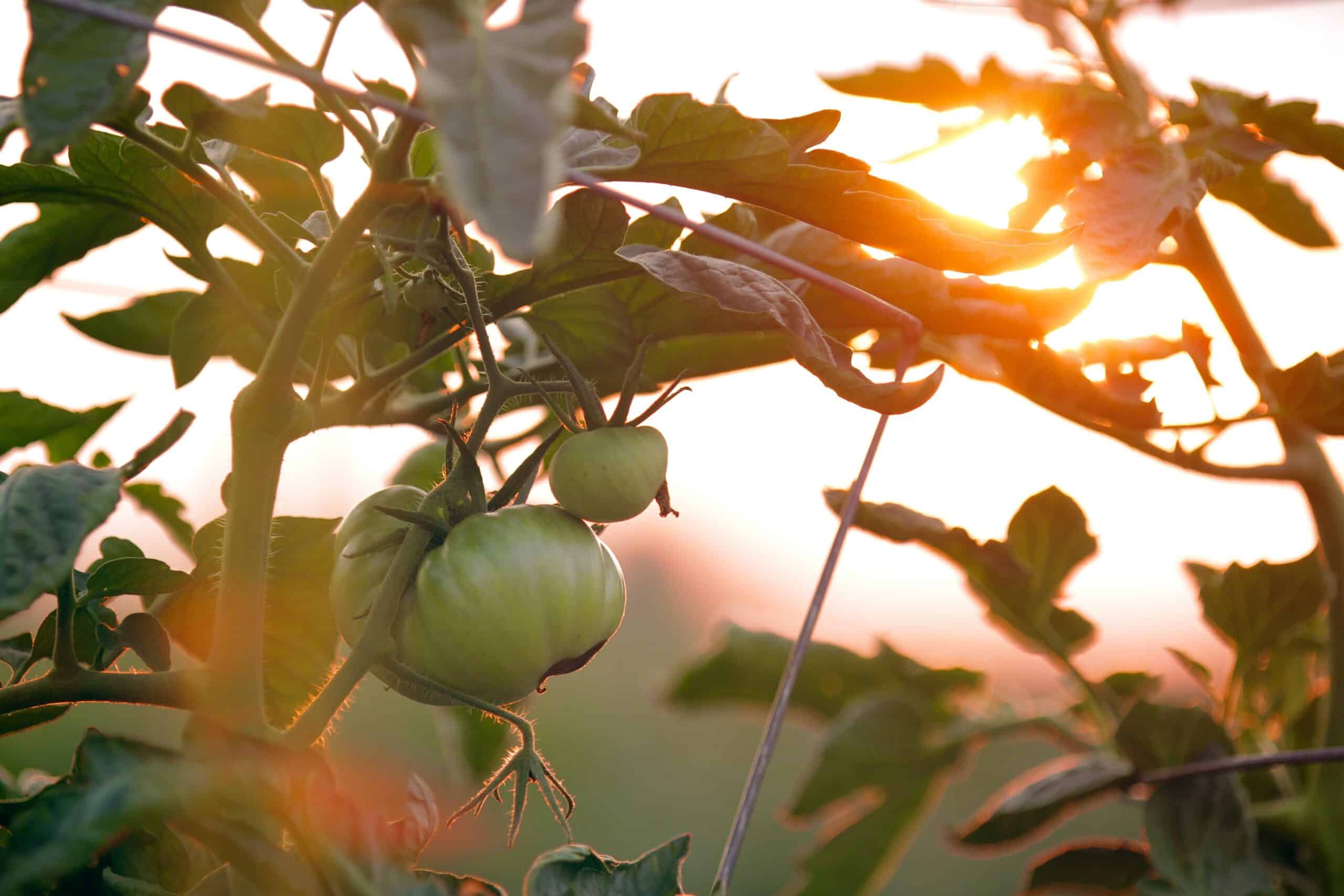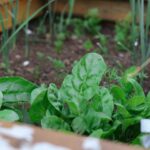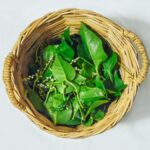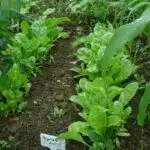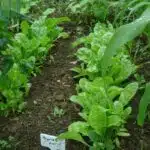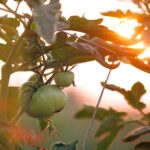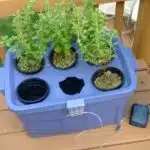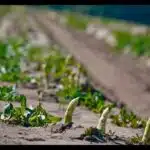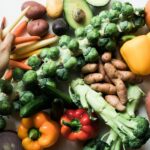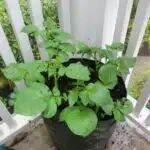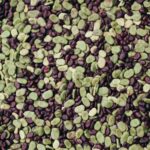As a specialist in botany and gardening, I am always looking for ways to serve others by helping them grow their own vegetables with the fastest possible results. For that reason, I have compiled a list of nine of the fastest growing vegetables available, and I’m excited to share it with you!
Not only are these vegetables easy to grow, they will provide you with an abundance of food in a short amount of time. Whether you’re looking for something to add to your summer salads or want to fill your freezer with frozen veggies for winter stews and soups, this article has got you covered.
From snap peas to radishes, each vegetable on my list is packed full of nutrients and flavor. So grab your garden gloves and get ready for some fast growing fun! Read on and find out which vegetables are the most productive members of your garden crew.
What Are The Fastest Growing Vegetables?
Ah, the perennial question of the ages: what are the fastest growing vegetables? For those who are in a rush to get their garden going, this is obviously an important query. Well, as a specialist in botany and gardening, I’m here to tell you that it’s not as complicated as one might think. In fact, there are several vegetables that can be planted and harvested in a surprisingly short timeframe.
Take arugula for example. This peppery green is incredibly easy to grow – simply scatter seeds on top of soil and wait for them to sprout! Within days you’ll have a crop of fresh arugula at your fingertips. It’s also great for salads or sandwiches and has a delicious peppery flavour that’s sure to tantalise your taste buds.
But arugula isn’t the only vegetable that grows quickly! Radishes, turnips, kale, spinach and other leafy greens can all be ready to harvest within weeks after planting. These leafy greens are loaded with vitamins and minerals and make great additions to salads or stir-fries when cooked. They add colour, texture and flavour to any dish – perfect for those looking for nutritious meals in no time flat!
So there you have it – you don’t need to wait months before harvesting a delicious crop of vegetables from your garden! With careful planning and some quick-growing varieties like arugula (plus radishes, turnips, kale and spinach), you can enjoy fresh veggies all season long – no matter how busy life gets!
Arugula
Arugula is one of the fastest growing vegetables, making it ideal for gardeners who are looking for a quick harvest. This leafy green is a member of the Brassicaceae family and has been cultivated in the Mediterranean region for centuries. It’s easy to grow from seed or purchased transplants, with many varieties available that range from mild to spicy. Arugula can be harvested within just two to three weeks of sowing and can be grown in both spring and fall, making it an excellent choice for year-round harvesting.
When planting arugula, make sure to provide plenty of sunlight as well as moist soil. It’s important to thin out the plants when they reach a few inches tall to prevent overcrowding and help promote air circulation. As your plants mature, you’ll want to keep them well-watered and fertilize every couple of weeks with a balanced fertilizer such as 10-10-10. Harvest the leaves when they reach 3″ – 4″ long by cutting off at the base with scissors or a knife.
When harvesting arugula, you’ll want to pick often since it will continue producing more leaves over time. Be sure not to wait until all leaves are fully mature before picking; this will encourage new growth for continuous harvest through the season. With proper care, you’ll have fresh arugula available from your garden in no time! Moving on from arugula, let’s look at how green onions can also be quickly harvested…
Green Onions
Green onions, or scallions, are a versatile and fast-growing vegetable that can be harvested in as little as 4 weeks. They can be used in many dishes to add flavor and nutrition, while also bringing a unique texture. As with most vegetables, the best results come from planting green onion seeds directly into the soil. Once planted, they sprout quickly and require very little maintenance.
From early harvests to harvesting mature plants, green onions provide an abundance of fresh produce throughout the growing season. When it comes to caring for them, there is no need for complicated techniques; just water them regularly and keep an eye out for pests or disease. For those looking for a quick harvest of green onions, they can easily be grown in pots or containers indoors or outdoors as long as there is adequate drainage and sunlight.
Green onions are an ideal choice for those looking to add freshness to their meals without breaking their budget. Furthermore, due to their hardiness, they are easy to grow even during colder months when other vegetables may struggle. With regular care and attention, you will enjoy a bountiful harvest of green onions that are sure to liven up any dish!
Radishes
Radishes are like little gems of the garden, shining brightly with their red and white colors. They are one of the fastest-growing vegetables available, with a four-step process for harvesting them in as little as 3 weeks. Here’s how it works:
- Plant the seeds directly into the soil.
- Provide plenty of moisture to keep the seeds from drying out.
- Thin out any overcrowded plants when seedlings emerge.
- Harvest when the roots are about 2 inches in diameter. As a specialist in botany and gardening, I can tell you that radishes have many uses and benefits which make them an ideal choice for those looking to grow something quickly and efficiently. They are incredibly nutritious and packed full of vitamins and minerals such as Vitamin C, Folate, Iron, Potassium and Magnesium – perfect for adding to salads or cooked dishes alike! Furthermore, they require very minimal maintenance compared to other vegetables – simply water regularly and watch them grow! It is no surprise then why radishes have become so popular among gardeners seeking faster growing vegetables. With just a few weeks of patience and care, anyone can enjoy these crunchy root vegetables in no time at all! The next vegetable on our list is spinach – another fast-growing delight that can be harvested just five weeks after planting...
Spinach
It is understandable to be skeptical of the idea of growing spinach rapidly. After all, spinach is a vegetable that requires attention and care in order for it to grow. However, with proper knowledge and practices, spinach can be grown in a fraction of the time other vegetables may take.
Spinach is a great example of a vegetable that can be grown quickly without sacrificing its quality or flavor. This leafy green thrives in cool weather and can be harvested within 30-35 days after planting, making it one of the fastest-growing vegetables available. Spinach can also be planted directly into soil or started in small pots indoors before being transplanted outside as soon as seedlings appear.
When it comes to harvesting, spinach should only be harvested when the leaves are large enough to eat. To ensure a steady supply of spinach throughout the season, make sure to plant more than one batch every few weeks. With this approach, you’ll have an abundance of fresh spinach at your fingertips in no time!
Lettuce
The sixth fastest growing vegetable is lettuce. Lettuce is a popular salad green, and although it’s not as nutrient-dense as some of the other vegetables on this list, lettuce can be grown in a fraction of the time. It takes just 4-6 weeks from seed to harvest for most varieties of lettuce.
One of the great things about growing lettuce is that it’s easy to get started with minimal effort. All you need is some enriched soil, a sunny spot, and regular watering. If you’re feeling ambitious, consider experimenting with different types and colors of lettuce to really make your salads come alive!
Once your lettuce has been planted, you’ll want to keep an eye out for signs of wilting or yellowing leaves. This could be an indication that more water is needed or that the plants are ready to be harvested. With a little bit of attention and care, you’ll soon have fresh heads of crisp lettuce ready to enjoy in no time!
Mustard Greens
Mustard greens are another great vegetable for a fast-growing garden. These hearty greens are part of the Brassica family and can be harvested in as little as 30 days from planting. Mustard greens have a mildly spicy flavor that can be enjoyed cooked or raw, making them extremely versatile. The leaves, stems, and seeds are all edible, offering an array of culinary options.
These plants thrive in full sun and moist soil conditions; however, they can tolerate light shade and some drought-like conditions. When selecting varieties to plant, look for ones that are adapted to your climate and maturity date. Planting mustard greens in succession will keep your harvest plentiful throughout the season while also providing a continual supply of nutrients to the soil.
When harvesting mustards greens, begin by picking individual leaves from the outer edges of the plant when they reach mature size – usually within four to six weeks after sowing. As you continue harvesting, new leaves will form on the stem allowing you to pull off more at once. This method allows for easy harvesting with minimal waste – maximizing both time and space in your garden!
Bok choy is another vegetable that grows quickly and easily in most climates. It is a member of the cabbage family but has a much milder flavor than its relatives…
Bok Choy
Bok choy, also known as Chinese cabbage, is a fast-growing vegetable that adds flavor and texture to many meals. It’s a cool-weather crop that is easy to grow in most climates. As a Specialist in botany and gardening, I’d like to provide an overview of why bok choy is the perfect veggie for your garden:
• Nutritional Benefits: Bok choy provides a wealth of essential nutrients that are beneficial for health, including vitamins A and C, potassium, calcium, and iron. Additionally, it is low in calories and fat.
• Gardening Benefits: Bok choy can be grown from seeds or transplants with minimal maintenance. It matures quickly and takes up little space in the garden.
• Culinary Uses: Bok choy has a mild yet distinctive flavor that makes it versatile enough to enhance both raw salads or cooked dishes like stir-fries or soups. The leaves can be eaten raw or steamed while the stems can be boiled or sautéed.
These features make bok choy an excellent choice for home gardens. With its quick growth rate and nutritious content, bok choy will provide you with healthy meals throughout the season without taking much effort on your part. Plus, it’s a great way to introduce new flavors into your cooking! From its nutrition profile to its culinary uses, bok choy has everything you need from a fast-growing vegetable – so why not plant some today?
Snow Peas
Snow peas are a vegetable that can be grown quickly and harvested in as little as 7-10 days. They are an excellent addition to any garden, especially for those who want to enjoy fresh vegetables on a regular basis. Their fast-growing nature, nutritional value, and delicate taste make them a great choice for gardeners of any skill level:
• Snow peas can be planted quickly and harvested in under two weeks • They are packed with vitamins A, B, C and K • Their crunchy texture is a great addition to salads or stir fry dishes
Snow peas have an interesting growth habit: they grow upward toward the sun rather than down into the soil like many other vegetables. This makes them easy to spot when harvesting and allows for quicker harvesting times. Plus, their vines are relatively low maintenance compared to other vegetables like carrots or tomatoes. The high yield from this vegetable also makes it attractive to gardeners looking for quick results.
Snow peas should always be harvested before the pods become too large and tough – otherwise they will not have the same sweet flavor that makes them so enjoyable. Once picked, snow peas can be stored in the refrigerator for up to five days or frozen for future use. With proper care, snow pea plants will continue producing throughout the season so there’s no need to worry about running out of this delicious ingredient!
Carrots
Gardening is the kind of activity that can bring great joy and satisfaction to the gardener. It’s an opportunity to nurture life while enjoying the beauty of nature. Carrots, one of the fastest-growing vegetables, are a great choice for gardeners looking for a quick harvest.
Carrots require well-drained, loose soil in full sun. The seeds should be sown shallowly and kept moist until germination occurs. After sprouting, carrots need regular watering, but not too much – overwatering can cause poor root formation and split roots. Carrots take roughly three months to mature – but you may find some varieties ready as early as two months after planting!
Harvest carrots when they reach their desired size – this will depend on your preference and the variety you choose. Pull them gently from the ground with a sharp tug, shaking off any clumps of dirt before storing them in a cool place or using them immediately in your favorite recipes.
No matter what size or shape they come in, you’ll find that freshly harvested carrots are sweet and crunchy delights that will add flavor to any meal!
Peas
Peas are a great option for the aspiring gardener looking to quickly get some food on their plate. Did you know that peas can be ready for harvesting within 10-12 weeks? That’s practically lightning speed compared to other vegetables! Peas are also a great choice when it comes to yield. Depending on the variety, one plant can produce up to 2 cups of edible peas!
As a botanist and gardener, I recommend shelling peas as opposed to snow or snap peas. Shelling peas have higher yields and they taste sweeter too! In order to ensure success, make sure you provide adequate support for your pea stalks by using poles or cages. This will help ensure the pea plants don’t flop over due to heavy pods and windy conditions.
When planting your peas, consider companion planting with other vegetables such as radishes or carrots. This will help keep away pests such as aphids and cabbage worms that might threaten your crop. With the right care and preparation, you’ll be celebrating your harvest in no time at all! Now let’s move on to Swiss Chard…
Swiss Chard
Moving along in our list of fastest growing vegetables, we come to Swiss Chard. As a green leafy vegetable, Swiss Chard is closely related to spinach and beets. It is an excellent source of dietary fiber, vitamins A, C and K and minerals such as iron and magnesium. In terms of flavor, it has a sweet earthy taste which makes it ideal for salads or cooked dishes.
When growing this fast-growing vegetable, it is important to note that good soil drainage with some organic material is essential. Planting can be done both indoors or outdoors depending on the climate. The seeds should be planted no more than two inches deep in rows spaced one foot apart and should be kept moist until they germinate. Once germinated, they will grow quickly into mature plants ready for harvesting within 40 days.
For optimal harvest results, regular pruning should be done to make sure the plant does not become too top-heavy as it grows taller. When harvesting Swiss Chard make sure you do not take more than a third of the leaves at any one time so as not to damage the plant’s growth potential or its overall health.
Swiss Chard is a great addition to any garden with its sweet flavor and rapid growth rate making it a favorite amongst many gardeners. Now let us turn our attention to another quick-growing vegetable – zucchini!
Zucchini
Zucchini is one of the most popular vegetables due to its quick growing time; it can be ready to harvest in as little as 45 days! This makes it an ideal choice for gardeners who want a fast-growing crop. As a botanist and gardener, I’d like to share some key tips for successfully planting and growing zucchini.
First, you’ll need to choose a suitable location for your zucchini plants. Here are some important points to consider: • Make sure the soil is well-drained and contains plenty of organic matter. • Zucchini require plenty of sunlight, so make sure you pick an area that gets at least 6 hours per day. • Zucchini plants need room to spread out – each plant should have about two feet of space between them. • Make sure the area has access to water or plan on providing regular irrigation during dry periods.
Once you’ve picked the right spot, it’s time to prepare the soil. Loosen up the top few inches with a shovel or tiller and add compost or fertilizer if needed. Then you can add in your transplants or directly sow your seeds into the ground at least 1 inch deep and 3 inches apart. Be sure to keep your seedlings moist until they’re established – water them regularly during their first few weeks of life! Finally, mulch around the base of the plants with straw or grass clippings to help retain moisture and suppress weeds.
By following these steps, you’ll soon be harvesting loads of delicious zucchini from your own backyard garden! With proper care and attention, this hardy vegetable can provide bumper crops year after year! So select a good spot and get started – happy gardening!
Choose A Suitable Location
Choosing a suitable location for your vegetable garden is an important step in ensuring its success. It’s like finding the perfect spot for a loved one to rest, as it must be just right and provide the best conditions for them to thrive. Finding the ideal location will help ensure you get the most out of your vegetable garden:
• Make sure it’s in an area with at least six hours of sun per day; • Make sure that it’s close enough to a water source; • Ensure that the soil drains well; • Carefully consider wind patterns.
As a botany and gardening specialist, I recommend considering these factors carefully when selecting your location. The amount of sun and water available can make or break your garden and play a key role in determining how much food you can harvest. You’ll also want to keep an eye on wind patterns, as strong gusts can damage delicate plants or blow away seeds before they have a chance to take root. Moreover, keeping an eye on drainage is essential; poor drainage can lead to fungal diseases or root rot in some vegetables.
Once you’ve found a spot that fits all these criteria, it’s time to focus on getting the right soil conditions for your plants!
Get The Right Soil Conditions
In order to get the best results when growing vegetables, you must not only pick the right ones, but also ensure that the soil conditions are ideal for their growth. Getting the right soil conditions is like a gardener’s secret weapon – it’s a key factor in making sure that your vegetables can reach their full potential!
Soil conditions are more than just the texture and consistency of the dirt. It’s important to consider other factors such as its pH balance, nutrient content, and drainage capacity. When these elements come together, they create an environment that creates favorable plant growth. The trick is to make sure that this environment is as well-balanced as possible so that your plants have everything they need to thrive!
It’s also crucial to understand how various types of soil work together and how different crops will respond differently to each type. By doing some research and experimenting with different combinations of soil types, you’ll be able to find the combination that works best for your crop. With a little bit of effort, you can create optimal growing conditions for your vegetables and watch them flourish!
Frequently Asked Questions
What Type Of Soil Is Best For Growing Vegetables Quickly?
Great news! Growing vegetables quickly is entirely possible. All you need is the right soil and some dedication. As a specialist in botany and gardening, let me tell you what type of soil is best for growing fast-growing vegetables.
Believe it or not, the soil that’s best for growing veggies quickly is actually easy to come by. You don’t need to buy bags of expensive organic fertilizer or search for rare compost. Instead, look no further than your own backyard! Well-draining loam soils with plenty of organic matter result in faster-growing vegetables when compared to heavier soils like clay. Furthermore, adding an inch of compost every year helps maintain nutrient levels and improves water retention in the soil.
So there you have it – loamy soils with a good amount of organic matter are ideal for growing vegetables quickly. With just a bit of effort, you can get delicious results in no time! Plus, having fresh produce right at home makes it much easier to eat healthily on a regular basis – now that’s something we can all get behind.
Are There Any Vegetables That Can Be Harvested In Less Than A Month?
If you’re looking for lightning fast growth in your vegetable garden, then look no further. Like a bolt of energy from the sky, there are many vegetables that can be harvested in less than a month’s time – giving you quick satisfaction and plenty of nutritious produce to enjoy. As a specialist in botany and gardening, I’m here to share some of my knowledge on the fastest growing vegetables so that you can get harvesting right away.
Let’s start with a metaphor: think of your garden as an engine revving up to full speed. Sure, some vegetables take longer to mature compared to others — but there are quite a few veggies out there that will reach peak growth within just weeks after planting. The key is knowing which ones are best suited for rapid growth and harvest.
Some examples include radishes, leafy greens (such as spinach or arugula), salad greens (like mesclun or mizuna), scallions, cabbage, green onions, lettuce, and even cucumbers! All these vegetables have short growing cycles and can be ready for harvest in only 4–5 weeks – plus they are incredibly delicious too! Simply prepare the soil properly by adding compost or fertilizers; this will help ensure optimal drainage and nutrition for faster growth. Then plant your seeds and watch them sprout up before your eyes!
No matter what type of vegetable you choose to grow quickly, it’s sure to bring joy into your life – whether through its taste or the satisfaction of eating something fresh out of your own garden. With these tips in hand, gardening has never been so easy! So get out there and start planting today!
What Vegetables Are Most Suitable For Container Gardening?
Container gardening is a great way to cultivate vegetables in a small space. It’s time-efficient and cost-effective, so it’s no wonder it’s becoming increasingly popular. When it comes to growing vegetables in containers, some vegetables are better suited than others. Let’s take a look at what vegetables are most suitable for container gardening.
To start with, leafy greens like lettuce, kale and spinach are all excellent choices. These are fast-growing plants that don’t need much space or soil depth to thrive. Furthermore, they’re also packed full of nutrients which make them an ideal choice for container gardeners looking to get the most out of their efforts.
Root vegetables such as carrots, beets and radishes also make great options for container gardens. These veggies can be planted directly into the soil and require little maintenance once established. Plus, the smaller varieties found in seed catalogs are perfect for container gardeners who lack space but still want to enjoy a fresh harvest!
Herbs such as basil, oregano and parsley can easily be grown in containers too! They add flavor and texture to dishes while providing essential nutrients. Moreover, they require minimal water and can even be grown indoors if necessary – making them an incredibly versatile option for container gardening enthusiasts everywhere!
Are There Any Vegetables That Can Be Planted Without Having To Wait For The Last Frost?
When it comes to growing vegetables, it’s important to consider which ones are suitable for container gardening and which can be planted without having to wait for the last frost. Luckily, there are a number of fast-growing vegetables available for those looking to avoid the hassle of waiting for the right time of year.
Vegetables such as radishes, lettuce, spinach, and beets can all be planted immediately after the last frost and they’ll often reach maturity in just a few weeks’ time. These vegetables prefer cool temperatures and so they’re perfect for planting in early spring or late fall when there is still a bit of chill in the air. They also require very little space and attention-making them ideal for container gardening or anyone with limited space.
In addition to these cooler weather vegetables, there are several warm season crops that can be planted without needing to wait until the last frost has passed. Tomatoes, peppers, cucumbers, squash and melons all thrive in warmer temperatures and can be started indoors before being transplanted outside once the weather warms up enough. These warm season vegetables will not only provide you with an abundance of fresh produce but also bring vibrant colour and life into any garden.
No matter what type of vegetable you choose to grow in your garden this year, keep in mind that timing is key when it comes to successful harvests. With a bit of planning and some patience you can have a delicious bounty ready to enjoy without having to wait around for that last frost.
What Are The Most Efficient Ways To Water Vegetables For Fast Growth?
Watering vegetables efficiently is the key to fast growth, with research showing that proper hydration can increase yields by up to 50%. It’s one of the most important steps in successful vegetable gardening. Here are some of the most effective ways to ensure your veggies get the hydration they need:
First, you should understand how much water each plant needs. Different plant varieties have different water requirements and it’s important to know which ones require more or less. You can do this by researching online or consulting a botanist or gardener.
Once you know your plants’ needs, there are several efficient ways to water them. For small beds and containers, hand-watering is ideal as it allows for precise control of each plant’s hydration level. If you have larger areas, drip irrigation systems are a great way to provide consistent levels of moisture over time and reduce waste. Finally, mulching around plants helps retain moisture and protect roots from heat and cold.
In addition to watering properly, there are other tips for encouraging fast growth. Fertilizing regularly helps ensure that plants get essential nutrients for robust growth and also helps replace any minerals lost through watering. Moreover, knowing when and how often to harvest is vital – if left too long on the plant, some vegetables can become woody or bitter-tasting.
By following these tips, you can give your vegetables the best chance of thriving and growing quickly so that you can enjoy their delicious fruits sooner rather than later!
Conclusion
The right soil, proper water and suitable container gardening could be the key to growing vegetables at an expedited rate. With careful consideration of climate and seasonal conditions, it is possible to grow a variety of vegetables in less than a month. This is especially true for those plants that do not require waiting for the last frost season before sowing or planting.
Overall, it is possible to grow vegetables faster than you might expect with the right knowledge and gardening techniques. From selecting appropriate varieties to watering efficiently, there are several ways to ensure speedy growth. By taking all these steps into account, gardeners can enjoy their harvest sooner rather than later.
So if you have been looking for ways to increase your vegetable yield without having to wait too long, try out some of these fast-growing vegetables! They will make your garden feel like a haven – an oasis in time – where you can enjoy the fruits of your labour in no time.

